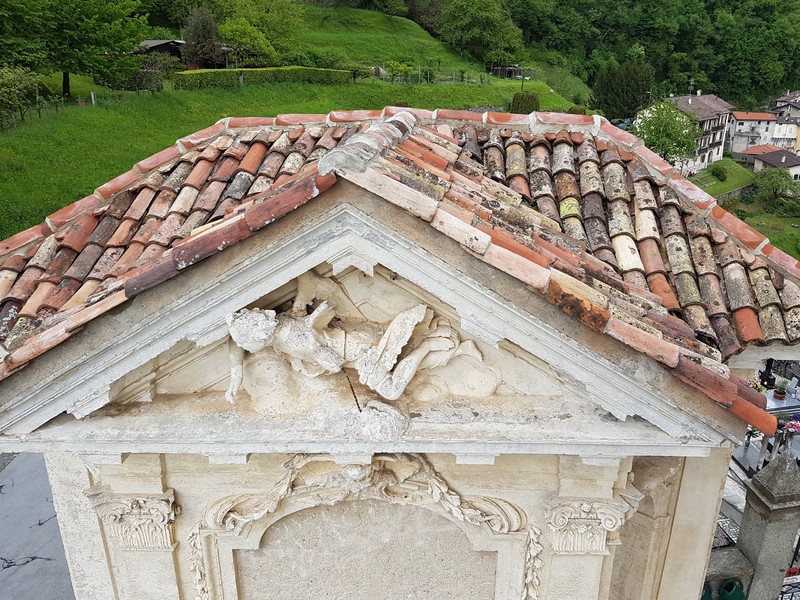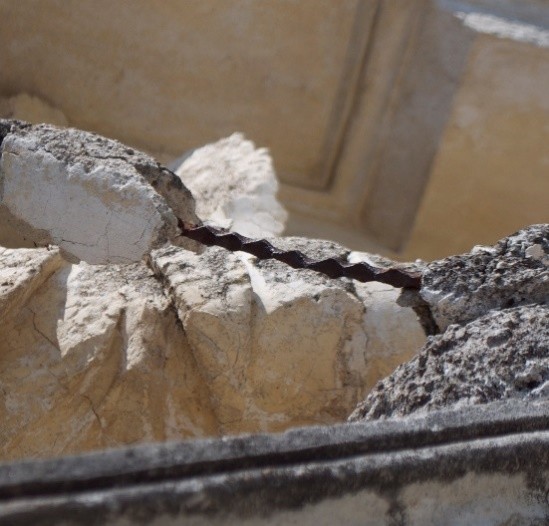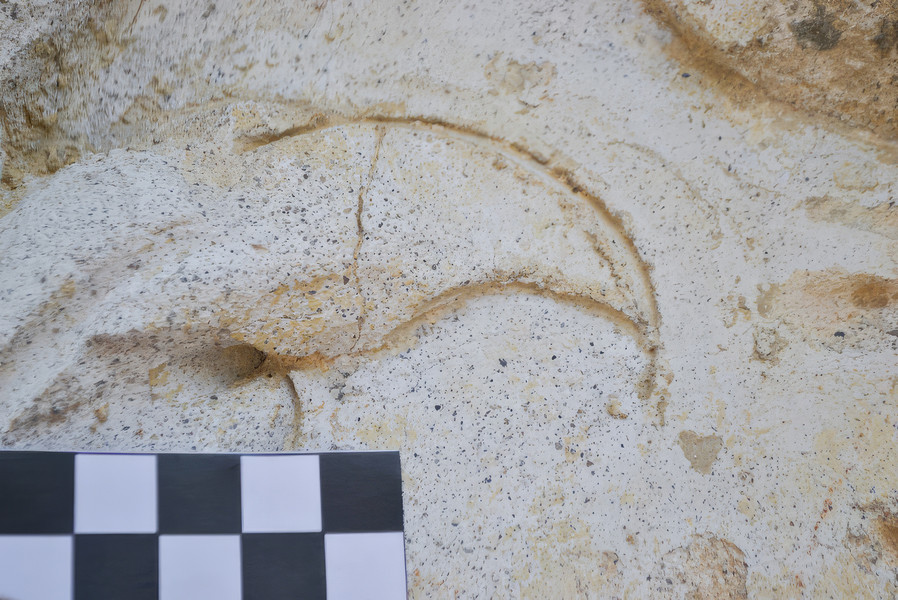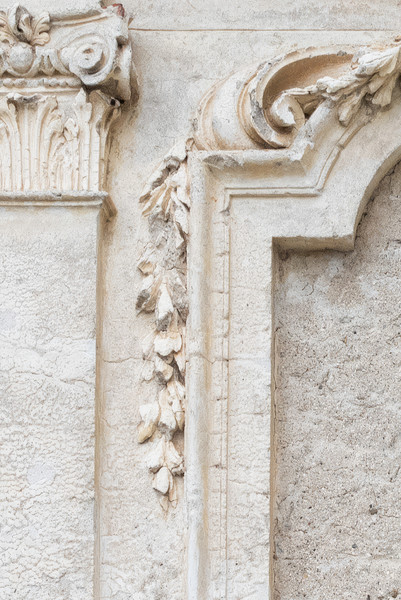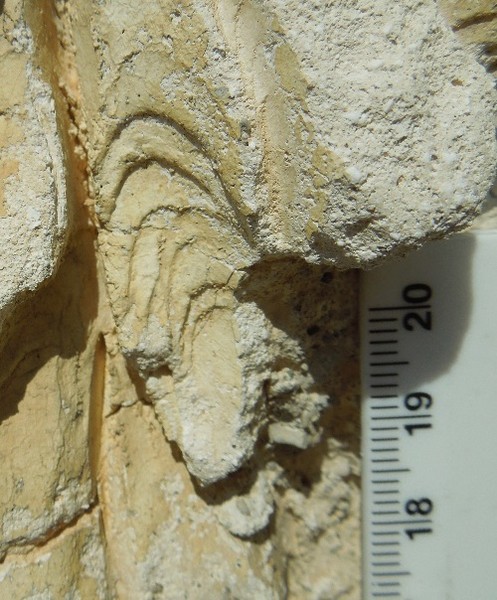External
For this ossuary, the decorations in stucco were limited to the exterior, which called for techniques very different than those for interiors, given the heavy stresses from exposure to weather. In this case, the many losses in the modelling allow observation of the executive details.
Where the projection of the stuccos was less, nails and wires provided sufficient support, while for the figurative decorations, the stuccatore embedded iron rods and pieces of brick in the body mortar (Fig. 1, 2).
The finishing mortar consisted mainly of aerial lime, with almost no aggregates and no marble dust. The reduced thicknesses of this layer and the presence of residual sand on the surface suggest that it was laid when the body layer was still fresh (Fig. 3). In this case, in fact, the rough coat, body mortar and finishing mortar were applied almost as a single coherent layer, worked “fresh on fresh” and with a very thin finishing skin spread only to equalise the colour. The skill of the stuccatore in applying the layers in united and compact manner obtained that special strength that ensured the resistance of the decorations and their survival to our own times. Approaching closer and looking at the surfaces, we can see how the artist, relying on his improvisational skills, used wooden and metal spatulas not only to model the surface, but to descend deeper, carving all three mortar layers at once and so attain naturalness and plasticity for the figures (Fig. 4, 5, 6, 7).







